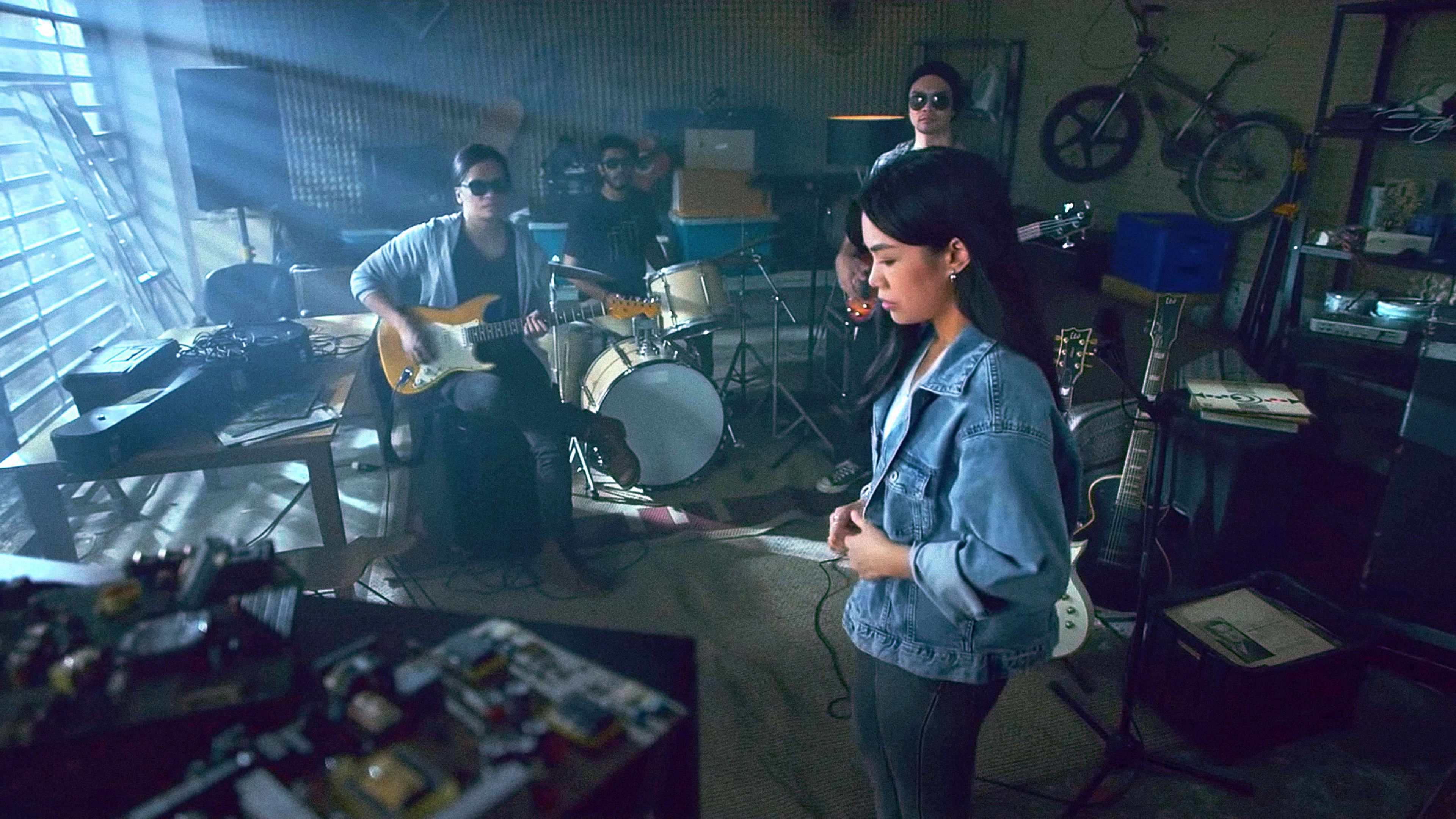It’s very difficult to describe in words what’s going on in the new RC Cola campaign from the Philippines without sounding like Don Draper on mushrooms.
This Filipino RC Cola campaign is just that weird.
Last month, the soft-drink maker debuted a spot featuring a young boy who comes home from school to confront his mother about being adopted. She proves to him her maternal authenticity in an, let’s say, unexpected way.
Now this week, the brand and Gigil, its Manila-based agency, have dropped the next spot of the campaign. In the midst of rehearsal, the lead singer of a rock band breaks down and quits due to a previously undisclosed condition she can no longer hide. Her bandmates then have a revelation of their own.
If you’re asking yourself, WTF is going on here?!, this is exactly where RC Cola and its ad agency want you. Gigil managing partner Jake Yrastorza told AdAge that the word basta in the tagline loosely translates to “whatever,” and the overall goal is to target Gen Z consumers.
“They live in the moment,” Yrastorza said. “They don’t need a list of reasons before they do something. They can do or buy something because—well, you know, whatever. There’s no need to explain. We appropriated that attitude and made the brand stand for it. Making the RC a mirror of our drinker.”
If Gen Z starts with those born after 1997, they were mere schoolchildren when, more than a decade ago, brands were getting very, mostly hilariously, weird, giving birth to an advertising subgenre that became known as oddvertising. The term was coined in the mid-aughts to describe the increasingly bizarre ads brands were churning out, particularly in soda, candy, and fast food, to get people’s attention more immediately amid emerging digital distractions like YouTube and social media.
Let’s take an odd walk down ad-memory lane, shall we?
The golden age of oddvertising
If one had to pick the apex of this trend, it would be when Burger King reintroduced The King as a plastic-head, frozen-grinned, creep-lurker version of its mascot.
Or was it when Skittles decided that the best way to sell candy was to make the ads resemble a psilocybin-induced fever dream as much as possible?
Lest we forget about the Snickers campaign that put historical figures in what appeared to be a mid-’90s Mercury Topaz for a road trip and rousing rendition of “Greensleeves.”
The heyday of advertising weirdness inevitably declined, as one-upmanship and originality gave way to mimicry and mediocrity.
But still, it was a good run.
The case for weird
The idea of brands getting a bit bizarre hasn’t completely left us. After all, it was just a couple of days ago that KFC unleashed a full 15-minute, soapy mini-movie-slash-ad on Lifetime called A Recipe for Seduction.
And then there was McDonald’s giving out golden-arches-shaped haircuts in Sweden.
But these outlandish outbursts are few and far between.
For a little perspective on this approach, I reached out to Craig Allen and Eric Kallman, who as an art director and copywriter team at TBWA\Chiat\Day New York more than a decade ago created many of the best spots of that era for Skittles, Starburst, and others. The two also were behind Old Spice’s “Man Your Man Could Smell Like” campaign while at Wieden+Kennedy.
Kallman, now a cofounder at San Francisco-based independent agency Erich & Kallman, says, “The real question is, should brands use creativity to stand out, which fewer and fewer are doing, and the answer is of course they should. The ads are being talked about on social media and got written up in Esquire. It’s probably the most buzz RC Cola has received in my lifetime.”
Allen, who founded Austin-based creative shop Callen in 2017, says weird doesn’t work for every brand—and it definitely doesn’t work when handled improperly. “Dropping these weird moments into otherwise normal situations is why these work so well,” Allen says. “That’s what worked in the Skittles campaign. Odd moments, grounded in reality. Weird works when it’s confident.”
Media fragmentation together with the level of difficulty for any brand to win a few precious seconds of our attention has increased exponentially over the last decade. Sure, brands need to use data and research in their work, but relying on science too heavily, combined with creative ambivalence, can lead one down the path to boring anonymity.
“The amount of marketers who spend gobs of money making ads that no one cares about, let alone remembers, talks about, or shares, is mind-blowing,” Kallman says. “As advertising grows more homogenous than ever, there is a huge opportunity for brands to break through and capitalize simply by using creativity.”
For the past year, we’ve all been seeking comfort in the most familiar things, Allen notes, and brands have held back in the face of global uncertainty. “We need . . . something different,” he says. “The brands that succeed in this new normal will be the ones unafraid to take risks and take those risks confidently. It’s time to entertain again.”
If Friends and rom-coms can find new life in the streaming era, RC Cola is telling us it’s time now for more marketers to embrace their own inner creepy singing bunny.
Recognize your brand’s excellence by applying to this year’s Brands That Matter Awards before the early-rate deadline, May 3.
